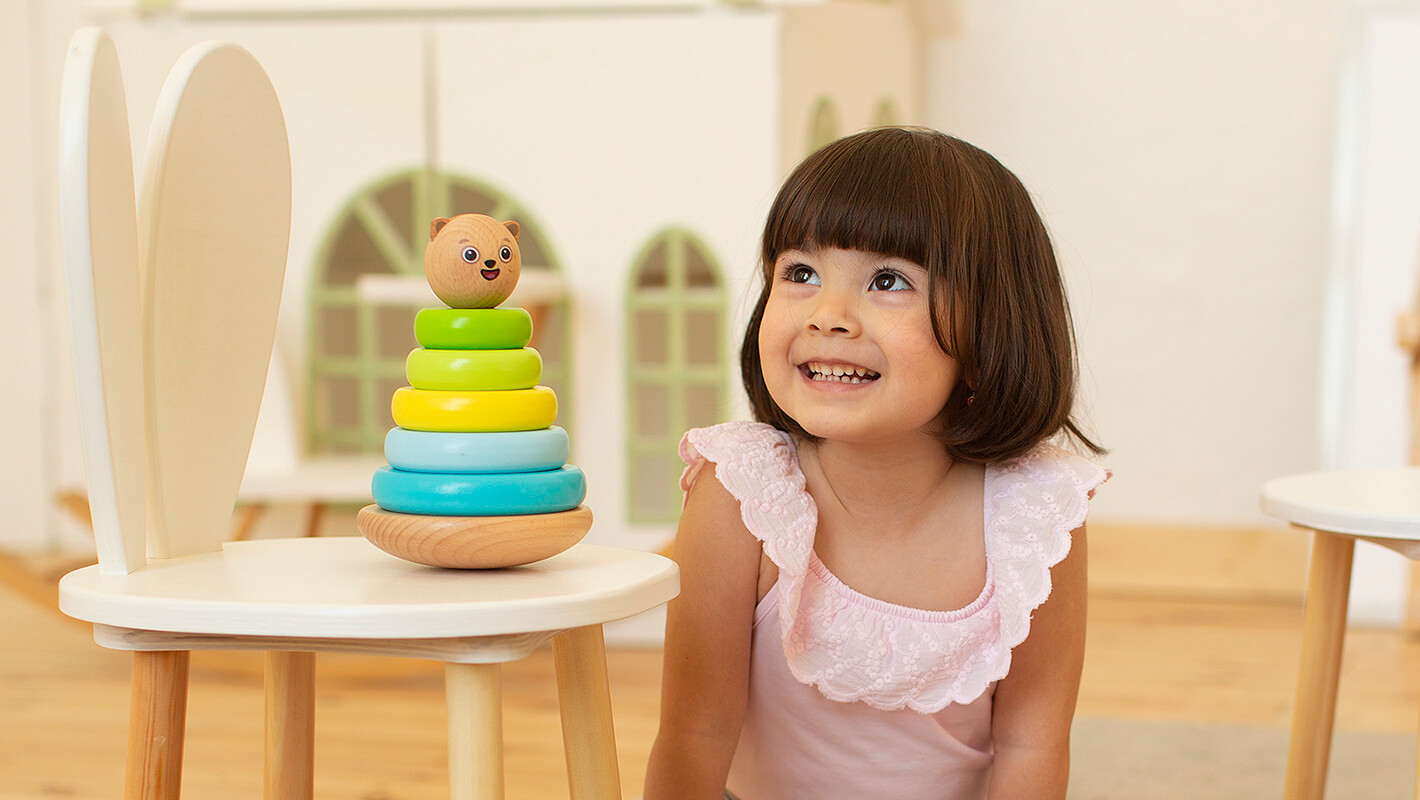What type of material do you use?
To produce our toys, we use mainly premium quality materials such as beechwood and rubberwood, for some parts we also use high quality plywood, pine and MDF.
Where are your products made?
Our toys are made in China. We work closely with several large factories and periodically visit manufacturers. It is very important to us to know that the standards of quality and labor safety are in line with the world’s highest standards.
Does your product contain phthalates?
No, our toys do not contain phthalates or any other toxic substances dangerous for a child.
How are your toys tested?
When we start work on a new toy, we always think about making the toy useful, educational and of course, safe. To achieve this, we start at the development stage and think over all the design features associated with it. Then, before launching into production, the toy is tested in an independent laboratory, where it is comprehensively checked to be completely safe for the child.
What does the CE marking mean?
This mark means that the product complies with basic requirements such as health, safety, function, environment protection standards and indicates compliance with prescribed control procedure. We always monitor the latest updates in safety and security requirements as they are introduced.
How do I know that your toys are safe for my child?
The safety of the child is one of the basic principles on which our work on any toy is based. Our toys, before they go on sale, are shipped and successfully pass certification to European (EN 71), The USA (ASTM), Australian (AS) and New Zealand (NZS8124) quality standards.
What are EN 71 and ASTM certifications?
EN71 is a set of European Product Safety standard that applies to all toys sold in the European Union. EN 71, is broken down into Parts: Part 1 – Mechanical & Physical Properties of Toys, Part 2 – Flammability of Toys, Part 3 – Migration of Certain Elements.
ASTM International’s Standard Consumer Safety Specification for Toy Safety (F963) has been considered the “gold standard” for toy safety.
F963 covers toys for children under 14 years of age, including plush toys, balls, games, dolls and action figures, infant and preschool toys, battery-operated toys, ride-on toys, projectile toys, and many more. The standard includes requirements and test methods related to small parts, sharp points and sharp edges, chemical and material safety, ingestion, pinching, battery overheating, use and abuse, and other potential hazards.
What is the size of the parts dangerous to choke?
There is a basic tool called the small parts test fixture. It is a small cylinder tube that is 1.25 inches in diameter and between 1 and 2.25 inches deep. It is designed to mimic a child’s mouth and pharynx. Any object that fits in the tube is considered a small part and must have a label on its packaging indicating it is a choking hazard for small children.
What type of dyes do you use on your products?
Generally, we use safe, water-based colors.
How should I care for wooden toys?
First of all, you should remember that submersion or exposure to water can cause the wood to swell and distort. To clean wooden toys, you may apply a wet towel and once cleaned any moisture should be removed immediately with a dry cloth.


